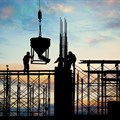
Subscribe & Follow
Jobs
- Electrical Construction Operator Level 2 Nelspruit
- Handyman Johannesburg
Planning for over-urbanisation: role of town planning pivotal

According to Roelof van den Berg, CEO of the Gap Infrastructure Corporation (GIC), as the country’s population steadily increases and cities begin to reach capacity, more and more of the working population will have no choice but to move to less urbanised surrounding areas.
“It’s about more than just space. Cities are struggling to keep up with growing demand for services, and aging infrastructure is already starting to buckle. We simultaneously need to maintain our existing cities and start laying the groundwork for less urbanised towns that can one day become populated cities capable of sustaining the heavy burden of urbanisation.”
This is where town planning plays a pivotal role. One of the key factors in town planning is making towns and cities economically, socially, and environmentally viable. Additionally, town planners need to consider the effects of what may be a mass migration to smaller towns in the next few decades, Van den Berg notes.
By taking the proactive approach, South Africa can be more prepared for when this day does come. Van den Berg notes that there are two viable options for achieving exactly this.
1. Metropolis development
A metropolitan region comprises an urban centre, its adjacent cities, and the rural areas in between. These are linked through employment and business activities, with the urban centre serving as the primary business hub.
When cities begin to grow to capacity, the excess population spills over into the closest developed towns first. From there, the less-populated rural areas in between see a rise in residential demand. The problem is that these areas are rarely equipped to deal with an influx of residents.
To meet future population needs and ensure that these secondary and tertiary metropolitan zones don’t suffer the same infrastructure restrictions as overcrowded cities, governments, town planners, and construction companies need to prepare.
“Informal township areas are generally located on the outskirts of towns and often lack proper infrastructure development. It’s our goal to uphold the principle of spatial justice and to address past imbalances through infill development on underutilised land. This also means integrating and uniting townships with their larger neighbours and promoting long-term sustainability and efficiency.”
By incorporating more urban socioeconomic characteristics into rural town planning, townships will have the basics in place for when urbanisation inevitably occurs.
“This involves implementing various strategies such as improving transportation infrastructure, providing access to basic amenities and building infrastructure which support economic growth. By doing so, we can ensure that these areas are able to accommodate a large influx of people while also promoting a more equitable and sustainable future for current and future residents,” says Van den Berg.
With proper planning and investment, townships can become vibrant and thriving parts of the larger metropolitan region, contributing to the overall economic and social well-being of the area.
2. New, purpose-built towns
Alternatively, government needs to look at establishing new towns where infrastructure such as intricate road networks, large water and sewerage reticulation systems, complex electricity grids, and a wide range of other public services are purpose-built for future expansion.
“Building new towns with the capacity to grow into new sprawling city centres will allow for the en masse migration of people from densely packed cities. This, in turn, will serve to de-densify the country’s urban areas, ease the burden of overcrowding and generate new avenues for economic growth.”
However, the initial cost of developing a new town can be significant, and there is a risk that the town may not attract the necessary population to sustain it. Additionally, the process can take many years and requires careful planning and coordination between many different stakeholders.
One solution is to appoint a fully integrated construction and infrastructure development company with expertise in town planning, zoning, infrastructure design, engineering, and construction all under one roof, Van den Berg explains.
“No matter which option government decides to choose, a project of this magnitude requires years of dedication, close cooperation between the public and private sectors, substantial funding and patience.
“But, if we do not prepare the land for more people, we will see a sharp increase in failing infrastructure, longer days without water and electricity, overburdened roads, and a shortage of housing in our already struggling cities.”
Related
Construction and vocational training can help SA's youth find jobs Olebogeng Manhe 16 Jul 2024 Infrastructure policy reforms and logistics plans could reshape SA’s economy Roelof van den Berg 8 May 2024 Transforming informal settlements with modern drainage solutions Olebogeng Manhe 5 Mar 2024 Association of African Exhibition Organisers partners on the Sustainable Infrastructure Development Symposium 2024 22 Jan 2024 The role and responsibilities of leaders in SA’s construction industry Roelof van den Berg 29 Dec 2023 Infrastructure investment is the key to reigniting economic growth Roelof van den Berg 22 Nov 2023 How infrastructure investment shapes SA's engineering future 1 Nov 2023 Inclusivity inspires more thoughtful rural home designs Olebogeng Manhe 25 Aug 2023








